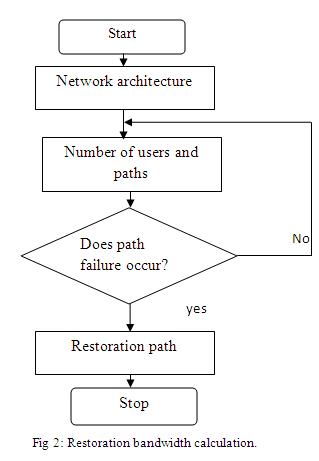Technical Paper Title: IMPLEMENTATION OF SURVIVABILITY TECHNIQUES BY USING POINT-TO-POINT APPROACH
Author: Dr. K.V.S.S.S.S.Sairam, Professor (ECE) & Principal
Institute: Scient Institute of Technology
Abstract: Due to distributed administration, large geographic coverage and expensive resource cost, communication networks are one of the most vulnerable parts in the current information infrastructure. They are the product of reactive evaluation to demand. Recent advances in fiber transmission and switching/routing techniques have dramatically increased the communication capacity of links. The exclusive growth of the internet and the convergence of optical communication and the data networking have jump started several emerging multihop optical networking technologies. This paper focuses on sphere capacity design and the network restoration techniques to mitigate the impact of failures and attacks, providing network survivability for the next generation internet.
Keywords: Internetworking, fiber optics, restoration, survivability
Introduction: The next generation internet will provide quality of service (QoS) subject to single point failure/attacks. It is a scenario which includes multiple interconnected networks with different technologies and multi vendor equipment for both the wire and wireless infrastructure. Its main focus is on
- Working bandwidth calculation
- Restoration bandwidth calculation
Working bandwidth calculation:
All paths (cost, A, n)
{
for i: =1 to n do
for j: =1 to n do
A[i, j] = cost[i, j];
for k: = 1 to n do
for i: = 1 to n do
for j: = 1 to n do
A [i, j]: = min ( A[i, j], A[i, k] + A[k, j]);
}
Survivable techniques implementation:
A novel can simple sphere provision matrix method was developed to implement the sphere capacity sharing operation. Its advantage is its application in aggregating information for the backup path routing. Its further advantage is successive survivable routing (SSR) and estimates the optimal sphere capacity allocation solution. It allows distributed line competition.
Evaluation of the multiprotocol labeling switching is an important method in order to evaluate the survivability techniques is as follows: such as
1. Hop count architecture:
i. Single hop architecture
ii. Multi hop architecture
2. Path metric
3. Resource
4. Share risk link group
5. Include node(s)
6. Exclude node(s)
7. Priority
Its further evaluation is:
1. Network management
2. Common collection management
A consolidated network management system
Methods:
Single hop architecture:
In single hop architecture
a). Link sequence (LS)
b). Link distance (LD)
c). Link connectivity (LC)
d). Digital cross connectivity factor (DCSF)
In multi hop architecture:
a). Link connectivity (LC)
b). Network connectivity (NC)
c). Demand connectivity (DC)
d). Link utilization factor (LUF)
e). Restoration factor (RF)
f). Digital cross connectivity factor (DCSF)
Results:
Table 1
Traffic requirements between node pairs and optical network connectivity table
Table 2
Determination optical cross connectivity pattern
Conclusions:
Survivability has become a very important issue in optical networks. The significant is due to more efficient architectures in which network elements with all layers have full information about all other network elements are the most viable options for future network architecture. It provides several fundamental building blocks for self configuring survivable multi network architecture in a quality of service (QoS) enabled environment.
References:
1. T Song WU ‘fiber network security’, Artech House 1992.
2. S J Philips, J R Westbrook ‘Approximate algorithms for restoration capacity planning ATNT Research’
3. T H WU and R H Cardwell. ‘Optimum routing for fiber network design: model and applications’ proceedings of IEEE, Information communications conference (ICC), Philadelphia, PA, June 1988, P2.5.1
4. T H WU, DJ Kolar and R H Cardwell. ‘Survivable network architectures for broad band fiber networks: model and performance comparisons ‘. IEEE journal of light wave technology Vol 6, no 11, November 1988,p 1698.




